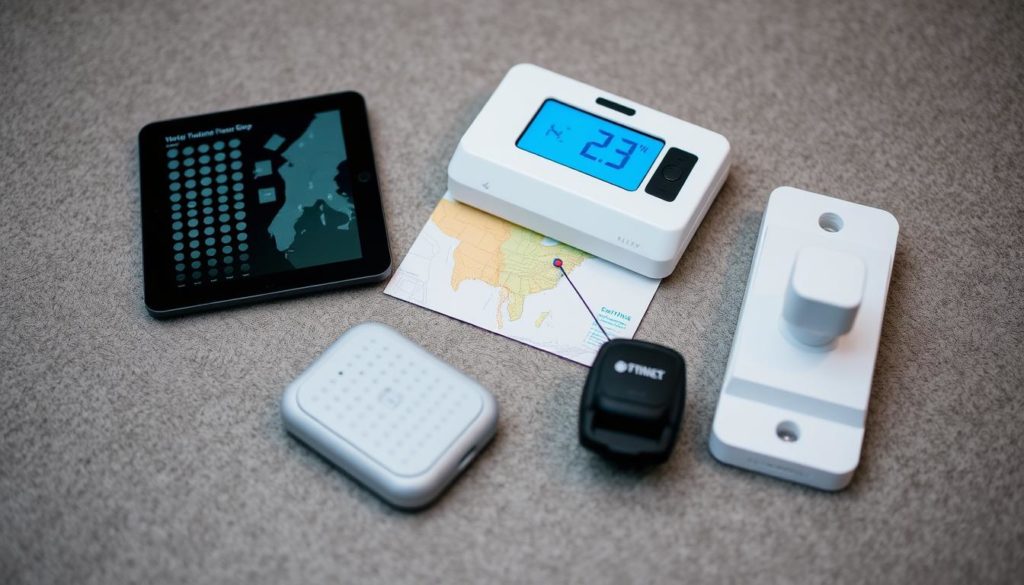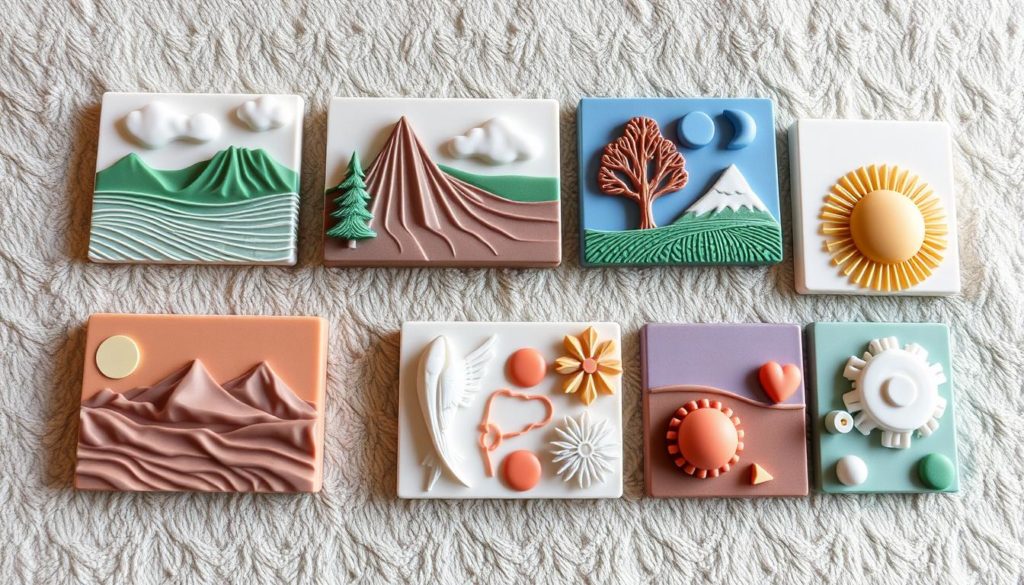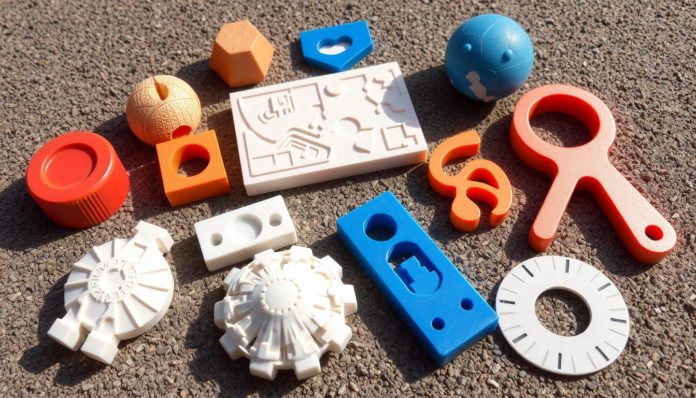Did you know that nearly 90% of visually impaired people live in low-income areas? Here, assistive technologies are rare. This is where 3D printing comes in, making things easier for many.
This guide will show you the amazing things 3D printing can do for the visually impaired. It helps make detailed learning tools and new educational resources. 3D printable objects for blind and visually impaired people are opening up new possibilities in accessibility.
We want to teach you how 3D printing can help visually impaired people be more independent. It can help with learning and getting involved in the community. Let’s see how 3D printing is changing things for the better, making learning inclusive and improving lives.
The Importance of Assistive Technology for the Blind
Assistive tech helps blind people in many ways. It includes devices like screen readers, braille displays, and audio books. These tools help blind people live more independently.
These technologies are very important for blind users. They help them do things that were hard before. This includes school work, jobs, and fun activities. For example, screen readers make it easy to use the internet.

3D printing accessibility is making big changes too. It helps make special devices for blind people. These include things to help them learn and be more independent.
We need to keep making new tools for blind people. As 3D printing gets better, it makes even more helpful tools. This helps everyone have the same chances.
How 3D Printing Enhances Accessibility
3D printing is changing how we help those with visual impairments. It turns digital designs into objects you can touch. This means we can make special tools for learning. These tools offer fresh ways to discover the world by touch.
Creating Tactile Graphics for Visually Impaired
One big plus of 3D printing is making tactile graphics for visually impaired people. These are pictures you can feel, which change how blind individuals understand visuals. Now, they can touch and learn from graphs, maps, and diagrams.

Developing Custom Tactile Learning Resources
3D printing also allows for customization. This means teachers and caregivers can create exactly what a visually impaired student needs. It could be a book in Braille or a shape that’s just right for them. Custom tools make learning better, as each student gets something that’s fit for their way of learning.
Benefits of 3D Printable Objects for Blind Users
Visually impaired users get more from sensing 3D printed things. Touching models of artifacts or scientific items can open up a new level of understanding. These models also help in everyday life. They can guide someone through a new place or help learn a skill.
To wrap it up, 3D printed files for visually impaired people bring big changes to accessibility. This tech doesn’t just make learning better. It lets people with vision loss connect with the world in exciting new ways.
3D Printed Files for Visually Impaired: Popular Uses
3D printed files have changed how the visually impaired access the world. They are now used in education, navigation, and daily activities. These files create tactile graphics that help people learn through touch, not just sight.
In schools, 3D models are very helpful for the blind. They turn complex diagrams and maps into something students can feel. This helps blind students understand and remember information better.
When it comes to getting around, 3D printed files are quite useful. They make tactile maps of places like schools, cities, and transit systems. Blind people use these maps to find their way in new places safely.
3D printed files also improve everyday tasks. They can be used for labels on items or to make devices easier to use. Blind individuals can customize these models for their special needs. This makes everyday challenges easier to tackle.
- Education:
- 3D printed maps
- Diagram models
- Detailed figures
- Navigation:
- Campus maps
- City maps
- Transport system models
- Everyday Life:
- Tactile labels
- Custom interfaces
By adding tactile design to 3D printing, we create helpful tools for the visually impaired. These 3D models improve their independence and life quality. This is how technology makes a real difference.
Designing Effective Tactile Images for Visually Impaired
Creating tactile images for those who are visually impaired is key. We need to understand what they uniquely require. This way, we can develop educational and functional graphics that truly help.
Understanding the Needs of Visually Impaired Users
It’s important to know what visually impaired users need. They use touch to feel the shapes and textures in graphics. So, we must use different textures, spaces, and sizes to show each part clearly.
Best Practices in Tactile Graphics Design
To make tactile graphics better for visually impaired users, follow these tips:
- Contrast: Use textures that stand out to easily tell parts apart.
- Texture Differentiation: Use various materials and textures to clearly differentiate parts of the image.
- Simplification: Keep images simple by focusing on key details. This avoids confusion.
Software and Tools for Designing 3D Models
There are great 3D printing software tools for designing tactile images. Some top choices include:
| Software | Key Features |
|---|---|
| Blender | Open-source, customizable 3D modeling and animation suite perfect for creating detailed tactile images. |
| Tinkercad | Beginner-friendly tool that simplifies 3D design, making it ideal for creating basic yet effective tactile graphics. |
| SketchUp | User-friendly software offering precise modeling tools suitable for both novices and experts in tactile image translation. |
Accessible 3D Printing Technologies
Technology has grown, especially in 3D printing. Now, accessible 3D printing helps many by being affordable and easy to use. It focuses on helping everyone.
3D printing has improved a lot, especially for those who are blind or visually impaired. There are now 3D printers and scanners made just for them. These tools help in creating touch-based learning tools and graphics.
| Brand | Model | Key Features |
|---|---|---|
| Prusa Research | Prusa i3 MK3 |
|
| Ultimaker | Ultimaker 3 |
|
| Creality | Ender 3 Pro |
|
With these new tools, 3D printing is easier and cheaper for everyone. This makes sure that everyone can enjoy what 3D printing offers. It’s all about making technology reachable to all.
Top 3D Models for Blind and Visually Impaired Users
3D models are key for blind and visually impaired users. They make learning and daily life easier. Thanks to 3D printing, producing models for education, fun, and practical use is simple. These models help with everyday tasks and learning new things.
Educational 3D Models
For blind people, educational 3D prints are game-changers. They include braille alphabets and shapes, helping students understand tough ideas. Let’s see how they do it:
- Braille Alphabets: They make it easier to learn to read by touching letters and numbers.
- Geometric Shapes: These shapes are hands-on tools for mastering math and science.
- Historical Artifacts: Users can feel history by touching replicas of important artifacts.
Recreational 3D Models
Recreational 3D models bring fun and engagement for those with vision loss. They modify games and activities, making them accessible to everyone:
- Adapted Board Game Pieces: These pieces make classic board games playable by touch.
- Puzzle Pieces: They stimulate the mind and are fun to solve.
Functional 3D Models
Practical tactile models make daily life better for visually impaired people. They include items like:
- Labeled Household Items: This helps identify things like spice jars or medicine by touch.
- Orientation Aids: These are tactile maps or building models for better navigation.
How to Find and Download 3D Printable Files
Finding 3D printable files for the visually impaired might seem hard. But, many online databases and communities are ready to help. Here are some main places to look:
- Thingiverse: It’s a huge collection of 3D models made by users, which includes designs for assistive technology.
- Pinshape: This site has an easy-to-use interface for downloading 3D files, with special sections for accessibility tools.
- MyMiniFactory: This place is known for its checked 3D models, which means they’re high-quality and ready to print.
Before downloading any 3D files, make sure they’re right for your printer. Here are some hints to choose wisely:
- Check the file type: Make sure the files are in a format your printer can use, like STL or OBJ.
- Read user reviews: What other people say can help you know how good a model is and how easy it is to print.
- Inspect preview images: Check out the model’s rendered previews to see if the details are what you need.
When searching for files, use specific keywords like “tactile graphics” or “assistive tech”. This method will help you find what you need faster. Using these tips will make finding and downloading 3D files much easier. Enjoy printing!
Tips for Printing Tactile Models at Home
Creating tactile models for the visually impaired is important. To get high-quality results, certain steps are essential. Whether you’re new to 3D printing or upgrading your skills, these tips will guide you.
Choosing the Right Materials
Selecting the right materials like tactile model materials is key. PLA and ABS are top picks, but TPU is great for a soft touch. Think about your model’s purpose when picking materials.
Printer Settings for Optimal Results
Adjusting your printer settings is vital for detailed, useful tactile models. Important settings to tweak include:
- Layer Height: Smaller layer heights (around 0.1mm) bring out more detail.
- Print Speed: Slowing down helps with precision and smoothness.
- Infill Density: A high infill makes models more solid.
Post-Processing Techniques
After printing, 3D printing post-processing techniques improve your models. Sanding and acetone smoothing remove rough spots. Tactile paints increase usability. These steps make your tactile models functional and nice to look at.
Challenges and Considerations in 3D Printing for the Visually Impaired
3D printing offers great chances to improve access for the visually impaired. Yet, several 3D printing challenges need attention for it to work well.
One big issue is how expensive and rare the equipment is. Good 3D printers and materials cost a lot. This makes it tough for people or groups to get the tech they need.
User Training
Teaching users properly is also key. Without the right training and help, using 3D printing can be hard. Training should consider accessibility considerations to be welcoming and useful for the visually impaired.
Ensuring Usability
3D printed items must be more than just copies. They should help the visually impaired. This means careful design focusing on touch and navigation. Accessibility considerations like different textures and clear layouts are vital.
Material Selection
Choosing the right materials is also tough. The materials need to last, be safe, and work for making detailed textures. Finding the right balance and keeping costs low is tricky.
To make 3D printing truly help the visually impaired, we must consider these 3D printing challenges and accessibility considerations carefully.
Success Stories: 3D Printing Making a Difference
3D printing technology has changed many lives, especially for those who are visually impaired. These stories show the incredible effects of innovation. They bring to light how creative ideas can make life better for people.
Case Studies in Education
3D prints have become crucial for visually impaired students in schools. An exciting collaboration is between 3Doodler and the RNIB in the UK. They’ve made tactile maps and tools, making geography easier to understand for blind students.
These examples show how schools use 3D prints to help everyone learn together. It’s about making education accessible for all students.
Innovative Personal Projects
Outside of schools, 3D printing helps with personal challenges too. A great example is tactile watches made for the blind. Projects like these are thought up by both hobbyists and experts. They boost everyday living and give blind people tools made just for them.
This shows how 3D printing can create custom solutions. It helps visually impaired people live independently and happily.
Future Trends in 3D Printing for Accessibility
The world of 3D printing is changing fast, bringing new ways to help those with sight challenges. With new developments, we can make specialized aids that feel real to the touch. These improvements will let blind people get a better sense of their surroundings through touch.
Researchers are working on tools that can be felt, heard, and even smelled. Imagine learning tools that mix touch with sounds or smells for a fuller picture. For example, 3D printed objects with audio descriptions could change how visually impaired students learn on their own.
Custom-made assistive gadgets are getting more attention too. Thanks to better scanning technology, people can get aids designed just for them. This move towards custom solutions is empowering. It encourages more independence. As we watch 3D printing grow, its impacts on making the world more inclusive can’t be overstated.
FAQ
What are 3D printed files for visually impaired?
3D printed files for the visually impaired are digital designs made into physical forms. They help these individuals feel and understand their surroundings better.
How does 3D printing benefit the visually impaired?
It creates touch-friendly graphics and customized learning tools. These improve engagement and help visually impaired users better understand their environment.
What types of assistive technology are available for the blind?
There are tools like screen readers, braille displays, and 3D printed models. These help the visually impaired live more independently.
How are tactile images created using 3D printing?
Using special software, designers make models that visually impaired can feel. These models have raised surfaces and are printed out.
What are some popular uses for 3D printed files in the visually impaired community?
They’re used for educational tools, like braille and shapes, and for everyday aids. Tactile maps and labeled items are also common.
What are the best practices in designing tactile images for the visually impaired?
Good design means knowing what the visually impaired need. It involves clear contrasts and simple images for easy touching and understanding.
What technologies facilitate accessible 3D printing?
Technologies include easy-to-use printers and scanners. There’s affordable gear and software that makes the whole process simpler.
Where can I find and download 3D printable files for the visually impaired?
Websites like Thingiverse and MyMiniFactory offer such files. There are also special platforms for assistive technology.
What materials should I use for printing tactile models at home?
Use durable materials like PLA or ABS. Some projects might benefit from flexible filaments.
What are common challenges in 3D printing for the visually impaired?
Costly equipment and materials are big hurdles. Finding the right gear and learning to design can be tough.
Can you share some success stories of 3D printing for the visually impaired?
Schools make braille maps and individuals create special tools. These stories show how 3D printing changes lives.
What future trends are expected in 3D printing for accessibility?
Expect more advanced aids and better material that feels real. Design and printing tech will keep getting user-friendly.


